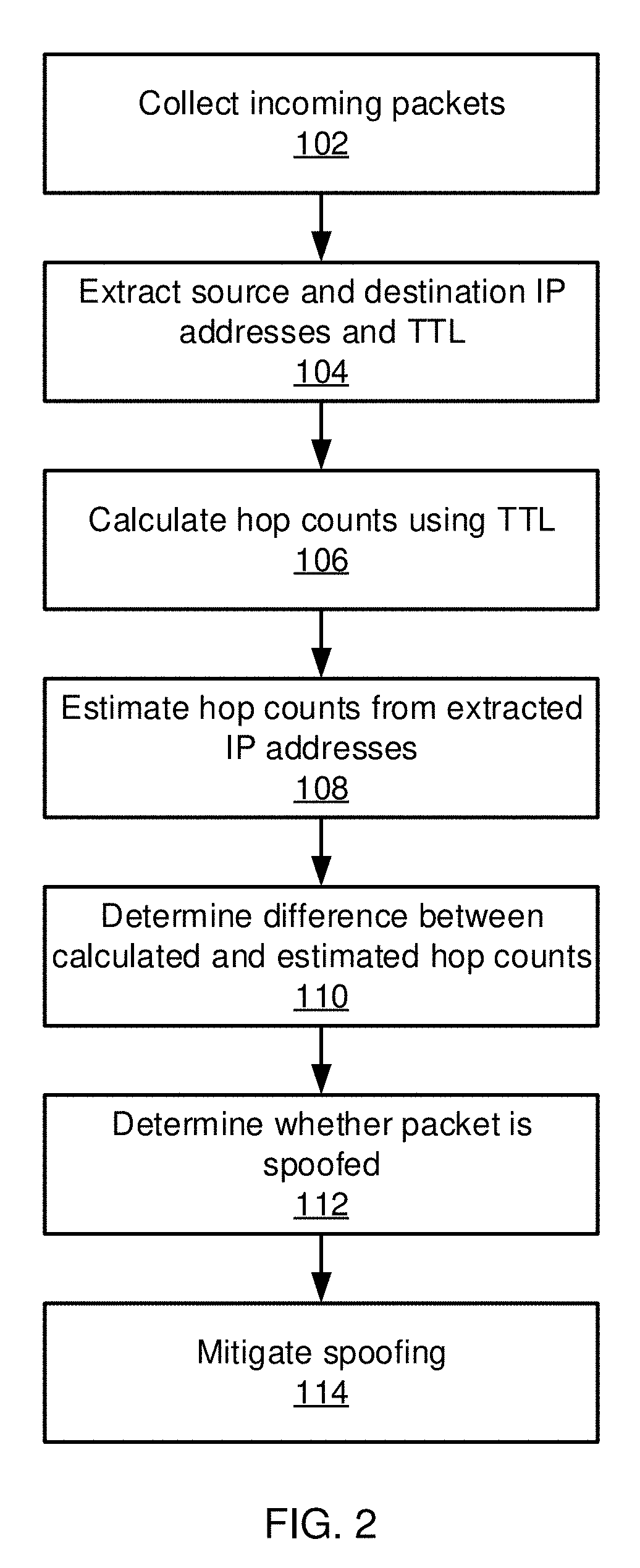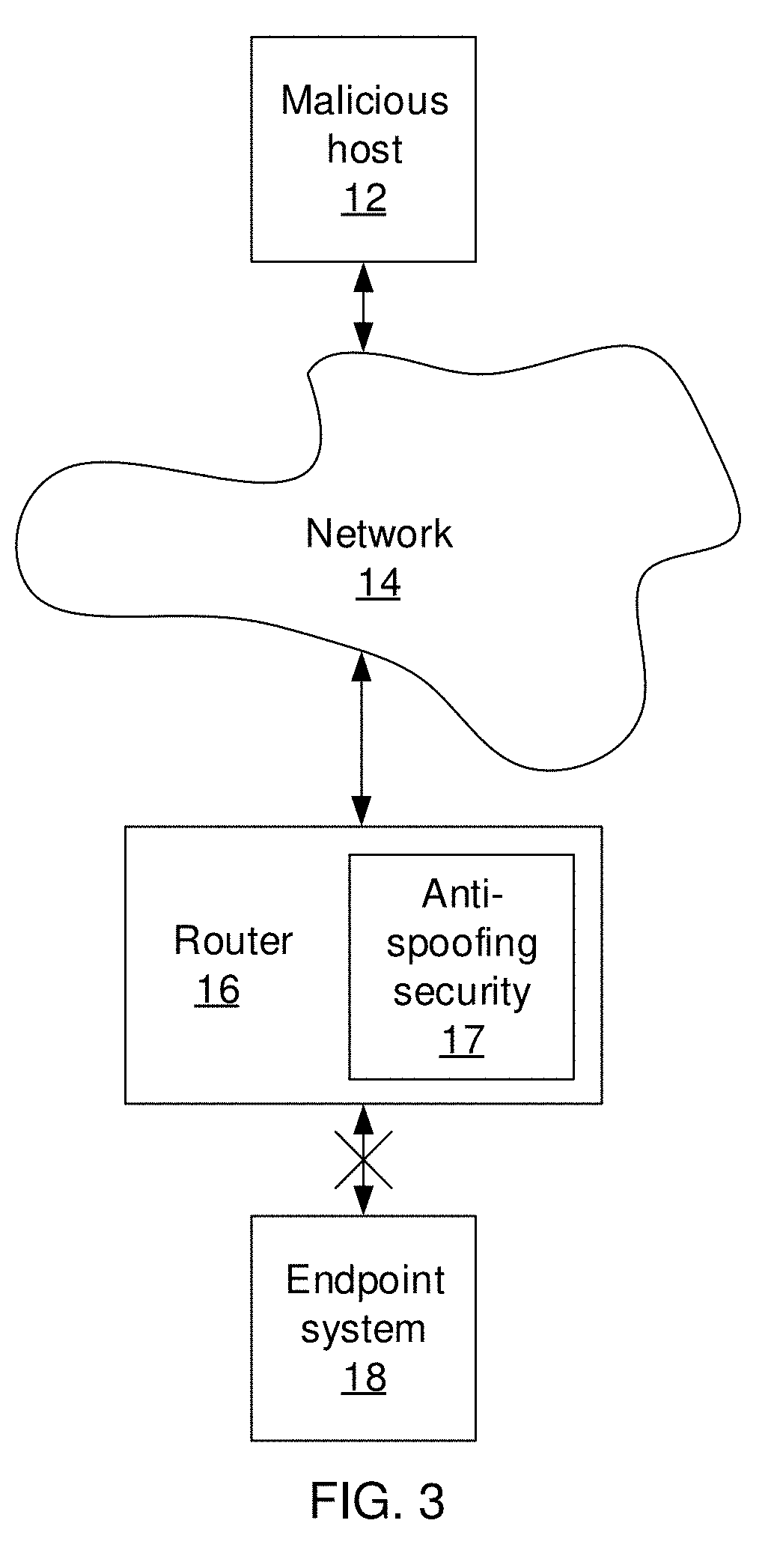Network endpoint spoofing detection and mitigation
a technology of network endpoints and detection and mitigation, applied in the field of computer network security, can solve problems such as difficult filtering of unwanted traffic and limited approach
- Summary
- Abstract
- Description
- Claims
- Application Information
AI Technical Summary
Benefits of technology
Problems solved by technology
Method used
Image
Examples
Embodiment Construction
[0018]Embodiments of the present invention makes use of neural networks to build immutable representations for each host in the Internet. The representations are trained using features that cannot be modified by an attacker, such as the hop count between two hosts. The representations of each Internet Protocol (IP) address represent a d-dimensional vector such that the distance between two representations approximates the hop count between the corresponding IP addresses. To detect spoofing, the present embodiments check whether the information in a packet between two hosts matches the representation of the hosts.
[0019]In some embodiments, the hop count is used because the attacker can spoof the source IP in a packet, but cannot spoof the time to live (TTL) value, from which the hop count can be determined. Thus, when the representation of the host with the source IP address does not match the hop count information between that host and the destination, the packet is likely spoofed. ...
PUM
 Login to View More
Login to View More Abstract
Description
Claims
Application Information
 Login to View More
Login to View More - R&D
- Intellectual Property
- Life Sciences
- Materials
- Tech Scout
- Unparalleled Data Quality
- Higher Quality Content
- 60% Fewer Hallucinations
Browse by: Latest US Patents, China's latest patents, Technical Efficacy Thesaurus, Application Domain, Technology Topic, Popular Technical Reports.
© 2025 PatSnap. All rights reserved.Legal|Privacy policy|Modern Slavery Act Transparency Statement|Sitemap|About US| Contact US: help@patsnap.com



